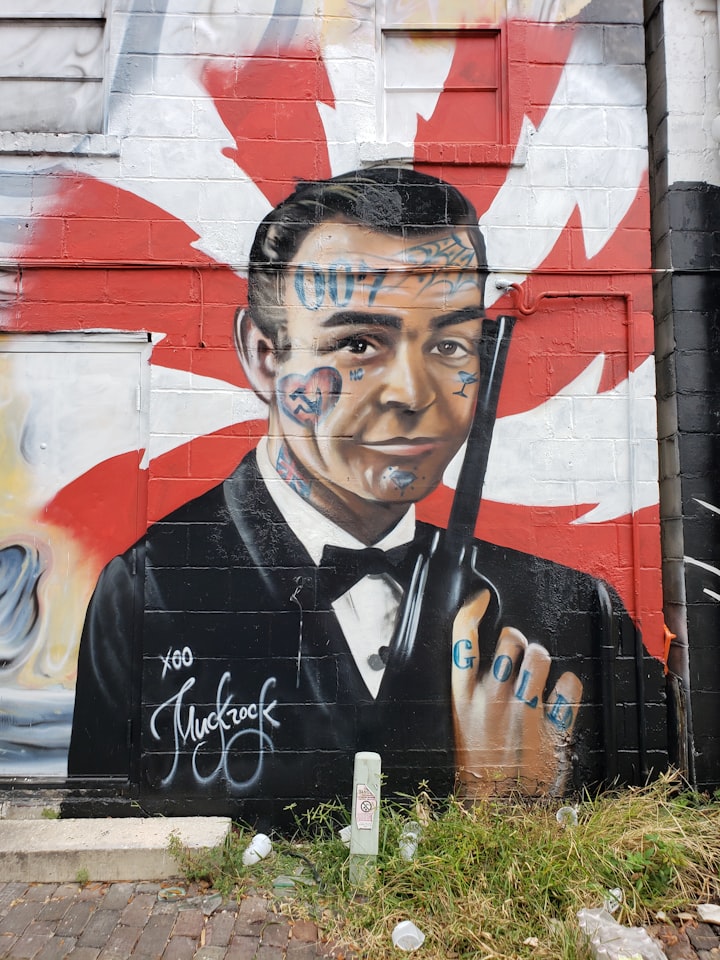The James Bond franchise of films is something of a time capsule. The twenty-four, soon to be twenty-five, films have been produced regularly in an unbroken line going back to 1962. As a natural consequence, this series of formulaic by design spy-thrillers can be used to shed light on the cultures in which its installments were produced. Of course, all media can be used to examine the culture that produced it, what the James Bond franchise provides is a picture of a culture's idealized masculine hero, as well as a look at political anxieties, and British cultural fascinations of the time.
An examination of all twenty-four extant Bond films would be either enormously long, lacking in depth, or both, and therefore this essay will concern only one, the first Bond film, Dr. No. Starring Sean Connery, Dr. No, released in 1963, established the formula overwhelmingly followed by subsequent movies. It is the origin of the iconic gun-barrel introduction, the "James Bond Theme," and James Bond as a character on film.
The film begins with a British agent being murdered and James Bond being ordered to investigate it. Bond is introduced winning at Baccarat and seducing a woman after using the iconic, and oft repeated, "Bond, James Bond," introduction. The plot of the film then consists of Bond investigating the murder, uncovering the scheme it was related to, the sabotage of American rocket launches via radio waves, seducing a henchwoman, encountering and rescuing a love interest, and foiling the scheme and destroying the villain's base of operations.
The status of Jamaica as a British colony pervades the film. The murder of the British agent that kicks off the film occurs at a country club exclusively attended by white British men who are waited on by Black Jamaican staff. The overwhelming majority of named characters are white and none of the Black characters occupy positions of authority. Throughout the film, Black Jamaicans are portrayed as superstitious and cowardly, believing the island on which Dr. No's base is located to be cursed and inhabited by a dragon, which is later revealed to be a tank. The principal Black supporting character, a boatman named Quarrel, is portrayed as uneducated, navigating the island by instinct rather than with maps. The consistent portrayal of Black individuals as less than the white cast, but largely helpful and unthreatening gives insight to the colonial view of Britain's Black subjects.
The racism displayed in Dr. No is not limited to negative portrayals of Black Jamaicans. The henchwoman Bond seduces is Miss Taro, a Chinese character played by Zena Marshall, a white British woman wearing yellowface. Use of yellowface is hardly uncommon for films of this time period, but the particular role being one that is involved romantically with Bond add depth to this instance. Miss Taro is not the only Chinese character to have lines in the film, and several Chinese actresses appear in Dr. No's lair. That the sole appearance of yellowface in this film is on the Chinese character sexually involved with Bond suggests that it was done to somewhat mitigate the race mixing involved in the seduction.
As stated previously, Miss Taro is only one of many Chinese characters in Dr. No. Indeed, that anxieties about China as a global power are expressed through Chinese people within the film is key to understanding the film. The antagonist, Dr. No himself, is of mixed Chinese and German ancestry, though he's played by a white Canadian. The overwhelming majority of Dr. No's henchmen are Chinese, and when Honey Ryder, Bond's love interest in the film, is captured, she's forced to wear a Chinese dress. Chinese people and culture are treated as menacing in parallel to the way that NATO powers were threatened by China as a communist world power.
When analyzing Dr. No, the thing that stands out most is the conservative even for the time racial politics of the first Bond film. Indeed, recognizing this presence in the film contextualizes the infamous yellowface plot-point of You Only Live Twice, and the profoundly reactionary undertones of Live and Let Die. There are dated concepts on display beyond the racial elements however, and when those are examined, revealed is a movie managing to be deeply concerned with the Cold War despite never mentioning Russia.






Comments
There are no comments for this story
Be the first to respond and start the conversation.